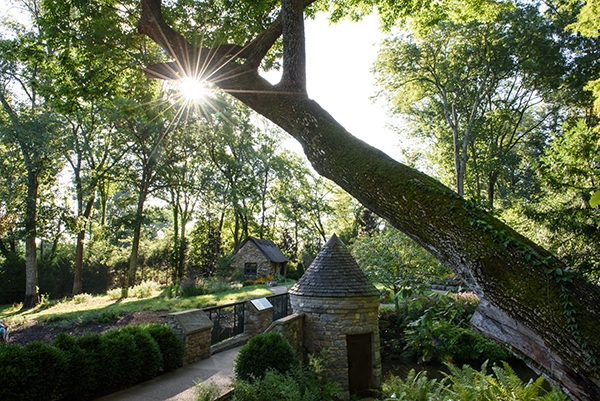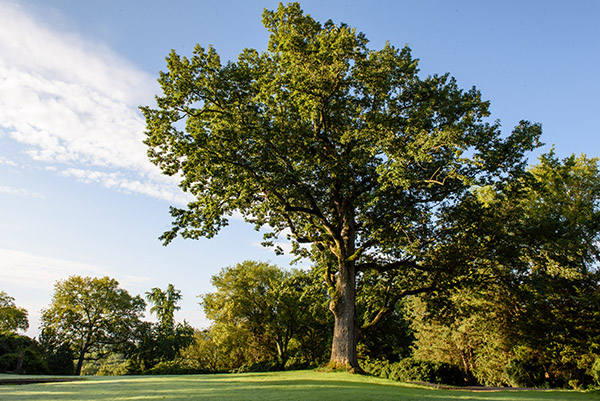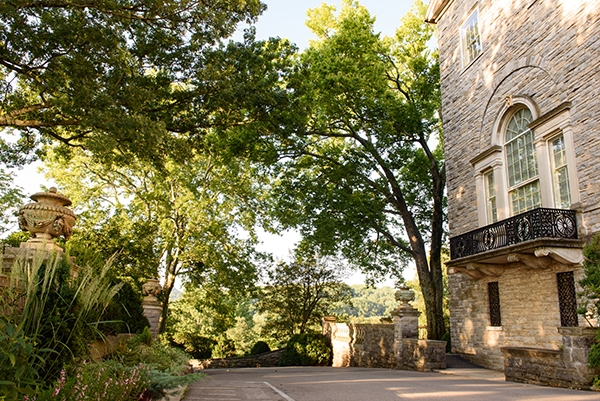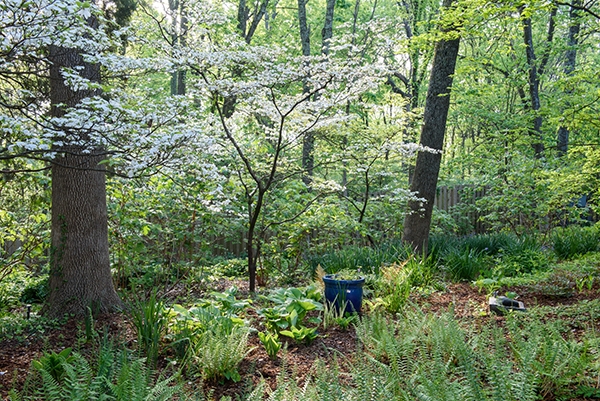Arboretum Accreditation
The Arboretum at Cheekwood was first awarded a Level 1 accreditation with the regional organization, Tennessee Urban Forestry Council (TUFC), in 2001. By 2010, after substantial program enhancements, a Level 4 status was awarded. In late 2020, The Cheekwood Garden Team decided to set their sights a bit wider and applied for recognition with the global organization, ArbNet. Earlier this year, Cheekwood was awarded a Level 2 status by the ArbNet Arboretum Accreditation Program and Morton Arboretum.
The first two requirements which qualified Cheekwood for a Level 2 standing with ArbNet included satisfying all Level 1 qualifications and displaying a minimum of 100 species of trees or woody plant varieties. The garden team was also required to submit an arboretum collections policy to describe the development and professional management of the plants in the arboretum collection. Another important qualification for Level 2 accreditation was having at least one arboretum employee whose job responsibility is to specifically manage or operate the arboretum. Lastly, it was important to show that Cheekwood provides enhanced educational and public programs related to trees.
ArbNet was launched in 2011 by Morton Arboretum to serve as an interactive community of arboreta. The ArbNet Arboretum Accreditation Program establishes specific standards of professional practice and offers four levels of accreditation. Cheekwood now proudly joins over 300 arboreta, across 28 countries — all with the common interests of tree-focused care and programming. The newly minted Level 2 Arboretum at Cheekwood includes well over 2,100 trees, curated to serve Cheekwood’s mission as a collecting institution and offer the community enjoyment and education. Cheekwood has documented 1,267 deciduous trees; 576 evergreens; 16 deciduous conifers; and 238 dogwoods.

A History of Cheekwood’s Arboretum
The land upon which the Cheek family settled to build their home and surrounding grounds was once wilderness and inhabited only by Native Americans, many of which were migratory. The Chickasaw, Cherokee, Choctaw, Creek, and Shawnee people hunted and camped in these upland areas. With westward growth of the United States and the incorporation of Tennessee into the country in 1796, the native peoples were displaced as European settlers began to move into the area, clear land, and create farms, forever altering the landscape and ecology of the rolling terrain.
A variety of crops were grown here in the Harpeth River Valley during the 1800’s, including cotton and foodstuffs such as corn and wheat. Cattle also grazed throughout the area. Later, founding families – the Hardings and Jacksons – of Belle Meade owned the land and used it to support their extensive thoroughbred horse breeding operation. By the late 1920s when the Cheeks began to build the estate, their fifty-five acres were in recovery, resembling more of a parkland than a mature forest. Trees such as ash, hackberry, eastern red cedars, along with Shumard and Chinkapin oaks were reforesting the land.
Cheekwood Estate & Gardens was born of the American Country Place Era, a period when manipulation and celebration of the landscape began a legacy that is now a century old. Today, the institution has developed an increasingly refined collecting interest as twelve distinct gardens. Numerous plant collections have been established over the sixty-year period in which the estate has served as a public destination.
Namely, the arboretum collection is one of the most comprehensive and unifying features of Cheekwood’s offering, providing a logical way to explore the estate and gardens. Three primary tree collections include the Nationally Accredited Cornus Collection™, the historic collection, and trees native to the southeastern United States. The dogwoods weave together a series of distinct gardens organized along the property’s eastern ridge, which ends at the base of the Historic Mansion & Museum, the foot of the property’s historic core. The historic landscape is embraced by a woodland sculpture trail, a fourteen-acre successional forest that serves as the primary venue for the native tree collection.

Native Tree Collection
The elegantly rolling landscape of Cheekwood’s fifty-five-acre property features stately native trees that illustrate Middle Tennessee’s cultural identity and trek through time. Elder Chinquapin, Shumard, and red oaks span the breadth of the estate, along with ash and hackberry trees. Understanding the traits of these native species gives insight pertaining to the land from which they grow and the many people with which they have cohabitated throughout centuries.
A prime example of a native tree’s story is that of the Chinquapin oak. It prefers alkaline soil and is typically found growing on top of limestone outcroppings. Its acorns were an important food source for the indigenous peoples. Later, its wood was used to build fences during the Civil War. This oak serves as a larval host plant for White M Hairstreak and Gray Hairstreak Butterflies. Geology, ecology, and history merge to form the narrative of a single tree.

Historic Tree Collection
Cheekwood has several heritage trees throughout the property, a few of which were first documented in the construction photographs of the estate, taken in the early 1930s. Perhaps the most recognizable of them all is the handsome Chinquapin oak gracing the Swan Lawn. A great welcoming ash tree beckons guests to enter the Hardison Gates, and, on the front lawn of the Historic Mansion & Museum, the pyramidal Shumard oak anchors the landscape along with ages old juniper and boxwood.
These trees are important to the estate’s legacy in both a historic and design context. They frame the story of a treasured family home and what would later become a place of respite for many. The oaks, hackberries, ash trees, and boxwood shrubs are the seminal plantings that Cheekwood strives to preserve, inspiring the continual refinement of the estate’s historic layer.

Cornus Collection
Extending throughout Cheekwood, from the Carell Dogwood Garden to the Ann & Monroe Carell Jr. Family Sculpture Trail, the estate currently features more than 300 individual dogwoods. Both tree and shrub forms are celebrated within the arboretum. With over 14 different species and 23 various varieties, dogwoods supply interests for all four seasons.
Becoming a Nationally Accredited Collection with the American Public Garden Association’s Plant Collections Network’s in 2012, enhancing the dogwood collection continues to be a significant collecting mission. Cheekwood’s dogwood collection remains the only one of its kind to be recognized by this organization. The gardens team stays informed about new cultivars and improved breeding of Cornus as it is part of our objective to keep the public informed about development of the genus.
Cheekwood’s arboretum serves the community as an outdoor classroom for young and old, as well as for locals and those just visiting. It is a place that provides introspection and connectivity, strengthening our physical and mental health. Cheekwood strives to maintain and enhance the tree collections, keeping their interpretation fresh and educational. As both a botanical garden and arboretum, it is our mission to always provide something new to explore, appreciate, and astonish, while preserving that which is historically sacred.
Stop by Visitor Services or download our arboretum map here to help you identify the 2,100 trees throughout our gardens.



